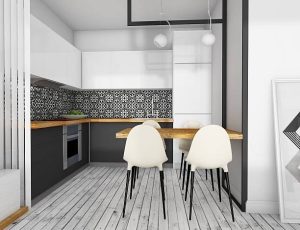When choosing tiles for your home, you want to know what you are looking for. Several factors are to consider, including size, shape, and colour. You can also choose complementary finishes to complete the look you are going for.
Colour palette
A tile colour palette is an important factor to consider when decorating your home. It can add dimension to your design and create a focal point. It can also be a great place to play with contrast. However, choosing a colour palette is not always easy.
 You can use a simple rule to make your selection easier. Choose a primary colour, a secondary colour, and a third colour for accents. Then choose a warm grout to compliment the tile.
You can use a simple rule to make your selection easier. Choose a primary colour, a secondary colour, and a third colour for accents. Then choose a warm grout to compliment the tile.
You can look at contemporary trends if you’re unsure what to choose. For example, go with a coastal design if you’re going for a beach cottage feel. You can incorporate sea glass to mimic the sound of the ocean.
The next step is to decide the size and layout of your room. The size of the space will determine whether you need large or small tiles. You’ll want to pick tiles that fit well with the rest of the design.
A good tile colour palette should consider the colours of the furniture and fabrics. For instance, if you’re going for streamlined, clean lines, you might want to select lighter shades. You can choose a darker tile if you’re aiming for a more luxurious style.
Choosing a tile colour is often complicated. You’ll want to consult a trader or your family for help. It would be best if you also considered lighting. Having light-coloured tiles will make a room appear larger and more open. You’ll want to avoid using dark or busy colours in a smaller room.
When determining the right tile colour, remember that your choice will impact your home. It is a major component that you may not be able to change overnight.
Shape and size
If you are renovating or simply remodelling your home, choosing the right tiles Adelaide is an essential part of the process. Not only can it change the look of your space, but it can also make it feel more spacious or compact. Knowing tiles’ different sizes and shapes can help you choose the right option for your space.
Large-scale floor and wall tiles can make a small room appear larger or a narrow room appear wider. In addition, they can add dimension, colour and uniqueness to your space.
Smaller square tiles, such as the ones used in backsplashes, are often used to highlight specific wall areas. They are commonly found in kitchens and bathrooms and come in various colours. They can be purchased in paper or mesh-mounted sheets.
Subway tiles are another popular option. They can be stacked and laid in various designs, including basketweave, vertical and herringbone. They are also available in various sizes, such as 4″ and 6″ tiles. Typically, they are used on walls, but some designers put them on floors.
Although the shape and size of a tile aren’t always the most important factor when defining the size of a room, it can still be a good idea to choose the largest size possible. These larger pieces can be installed perpendicularly to the long side of a room and give the illusion of height, width, and depth.
However, the most important factor is your personal preferences. Depending on your tastes and budget, there are many tile options to choose from. Whether you choose one tile or multiple ones, it is important to know how to blend them to create a cohesive design.
Complementary finishes
Complementary finishes aren’t the only type of tiles on your hands when tiling your house. One of the most exciting aspects of this process is that you can choose from a dizzying array of materials. When comparing one material to another, read up on all facets of your new digs before making the final call. It is also good to consider your family’s dietary needs and allergies to ensure your choices aren’t in for the crinkle craw. You’ll be rewarded with a lovely home where you and your kin can live their best lives.
Mood board
If you are planning a bathroom renovation, a mood board can be a great way to get an idea of what the finished room will look like. It will help you decide what colours to use, where to put the lighting, what flooring to choose from, and more.
A mood board can be a fun and creative way to bring ideas to life. You can create a clear, visual representation of your ideas by placing pictures, fabrics, and other items together.
A mood board can be made with any materials and used for digital and physical designs. A mood board will let you test different ideas and keep your design wish list intact.
Creating a mood board is easy. First, pick a theme for your board. Then collect inspirational images, and start assembling them. Once you have your collection, cut out the pictures.
The next step is to place the pieces into a pattern. Then, add a few extra elements. These can include furniture, textiles, and even decorative trimmings. The goal is to find as many items as possible so that you can give the best impression of the final design.
